COURT / DIPLOMATIC DRESS

WHITE TIE
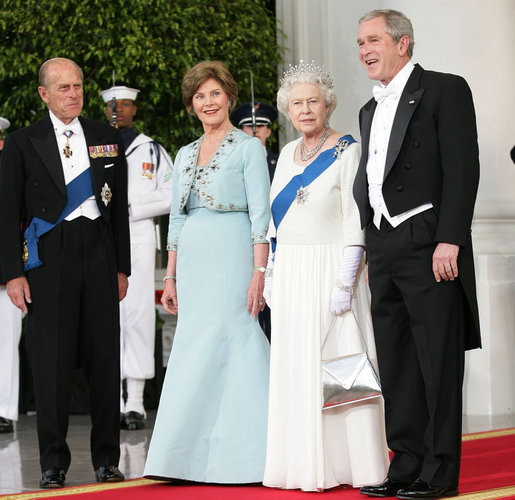
MORNING DRESS
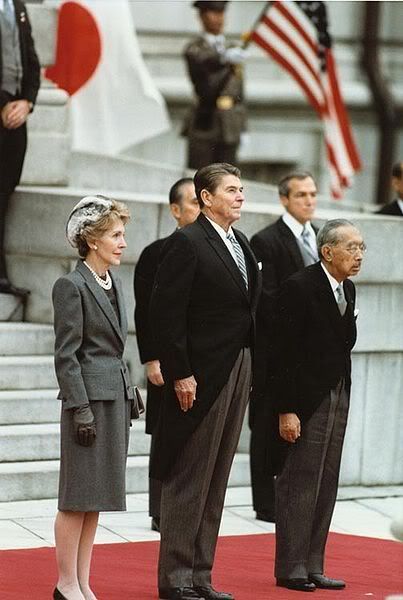
BLACK TIE
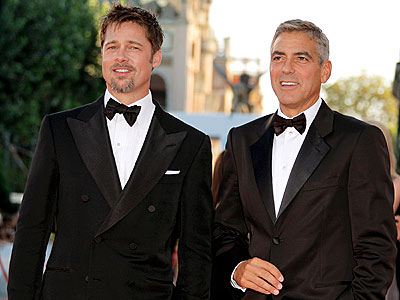
BUSINESS

BUSINESS CASUAL
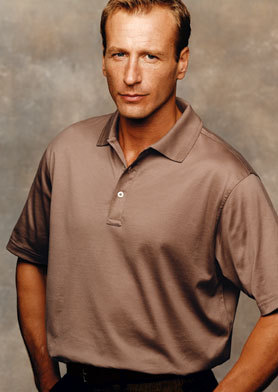
CASUAL

ATHLETIC
Moderator: Community Team







Pack Rat wrote:if it quacks like a duck and walk like a duck, it's still fascism
viewtopic.php?f=8&t=241668&start=200#p5349880






















Pack Rat wrote:if it quacks like a duck and walk like a duck, it's still fascism
viewtopic.php?f=8&t=241668&start=200#p5349880



















saxitoxin wrote:WHO ANSWERED WHITE TIE?!









Slash wrote:I once went to school dressed as Mark Twain, does that count?
Lootifer wrote:saxitoxin wrote:WHO ANSWERED WHITE TIE?!
Actually I changed my vote. I wore an identical suit to Mr Bush to my school ball.
Pack Rat wrote:if it quacks like a duck and walk like a duck, it's still fascism
viewtopic.php?f=8&t=241668&start=200#p5349880













saxitoxin wrote:Slash wrote:I once went to school dressed as Mark Twain, does that count?
Have you ever noticed Mark Twain and Albert Einstein costumes are fairly interchangeable?






Formal evening dress is strictly regulated, and properly consists of:[2]
Black or midnight blue dress coat (commonly known as an evening tailcoat) with silk (grosgrain or satin) facings, horizontally cut-away at the front
Trousers of matching fabric with one wide or two narrow strips of braid down the side seams
White plain stiff-fronted cotton shirt
White stiff wing collar, detachable
White bow tie
White low-cut waistcoat
Black silk socks or stockings
Black court pumps (with black silk bows) or Oxfords
The coat (or 'bodycoat' as tailors call it) is cut to hug the body closely and is detailed in the seams at the back of the coat and the waist seam. The lapels can be pointed or have a shawl collar; faced with either silk satin or grosgrain although other types of silk can be used including moiré and barathea weave. The colour of the facings should be black or, in the case of a midnight-blue coat, be either black or midnight-blue. The coat is cut so it is worn open and cannot be buttoned; the two sides should never meet. There are usually six decorative buttons, three on each side, which are either of polish black horn/bone or covered in silk which could be the same as that of the facings or figured. The cuffs usually have four buttons. The fronts are cutaway at a sharp angle and the tails have a single vent. There are two styles of cut for the coat; the older cut with 'laid-on' lapels where the lapels are attached as a separate piece onto the body, and the modern 'grown-on' lapel with the lapel cut as part of the body and shaped using darts.
The trousers are of the same cloth as the coat and either have a very wide single line of braid or two narrow lines of braid sewn very close together running down both side seams. They are usually cut with a high-rise so the fronts of the coat cover the waistband completely in order for the waistcoat to cover the waistband easily. They are worn with braces (suspenders in American English) to avoid disrupting the lay of the waistcoat in the case of a belt being worn and to keep the trouser creases aligned.
The waistcoat and bow tie are usually made of cotton marcella (known in American English as "piqué"), although plain white, off-white or ivory silk bow ties and waistcoats are sometimes worn. Black wool waistcoats were once the norm for full dress as the alternative to the white but it is now rarely worn. The waistcoat is cut low, that is, the opening is low to allow much of the shirt front with their studs to be displayed. It is either single or double brested, with or without revers/lapels, and can be fully backed or backless. Button numbers vary depending on style and are almost always detachable to allow the waistcoat to be cleaned and startched. The bow tie also exists in various widths and styles.
Many menswear authorities today[3] assert that the bottom of the waistcoat should not be visible below the front cutaway of the tailcoat. This has been the prevalent view in the United States since the 1920s, where actors such as Fred Astaire popularized the look of the unbroken black line from neck to feet which lengthened their silhouettes on-camera. The practice was also reinforced repeatedly by authorities dating back to at least World War I[4] and is adhered to in numerous fashion magazines dating back to at least the 1840s.[5] However, since full evening dress is the most conservative form of men's dress, and has otherwise changed very little since the 1870s when the bottom of the waistcoat was visible below the cutaway of the tailcoat[citation needed], some traditionalists (especially in Europe and among the aristocracy) tend to wear the waistcoat with its hem extending below the cutaway of the tailcoat by 1–2 cm. As for British royal authority on the matter, the waistcoat does not extend below the fronts.[6] Worn either style, the waistcoat must cover the trouser waistline (which should never be seen).
The shirt should have a detachable stand up or wing collar, with a plain but stiffly starched bib front and cuffs, though shirts with attached collars are becoming more prevalent. Shirt fronts can be plain linen, plain cotton or cotton marcella and are closed with studs.
Shirt studs, cufflinks and waistcoat buttons could be silver, gold or other precious metals, faced with mother-of-pearl or other semi-precious stones and ideally all matching in a set. A white pocket handkerchief and boutonnière may be worn although in France both may not be worn simultaneously and the boutonnière is traditionally a gardenia). The timepiece is of either a pocket watch suspended from a ribbon fob (worn inside the fob pocket of the trousers) or Albert chain (worn in a pocket of the waistcoat). Wrist watches are never to be worn.
At occasions of state, and in the presence of royalty, state decorations are worn by those who have been awarded them: miniature medals plus up to four breast stars, a badge suspended from a narrow neck riband and a broad riband (sash).
The hat should be a black silk top hat which may be collapsible — a tradition which arose from the fact that opera houses traditionally lacked a cloak room to hand in a top hat. The overcoat should be a dark dress coat such as a Chesterfield overcoat, Inverness cloak, or opera cloak. White gloves were traditionally considered essential and are often worn for dancing but must be removed when dining. A silk scarf and cane are optional extras.
At some state and heraldic occasions in Britain, knee-breeches and silk stockings are worn instead of trousers, also known as 'alternative court dress'.[7] This is particularly necessary where the garter of the Order of the Garter is intended to be worn. If a Knight of the Garter wears breeches, he wears his garter under his left knee. Ladies of the Garter wear their garters above their left elbows. (Buckled shoes, however, are not correct wear with white tie; rather, 'court pumps' (low-cut patent shoes with black bows) may be worn - either with breeches or with trousers.)
Other than opera pumps (which can have pinched or flat bows), patent or highly polished calf leather Oxfords (with or without toe-cap seam) are correct to wear with white tie, especially with black satin ribbon laces. In the past, other types of shoes have been worn but now rarely are which includes patent button boots (with black wool or silk galoshes) and Chelsea boots (sometimes with bows). The socks are of black or midnight blue silk or fine cotton. The trend to wear coloured socks with white tie is incorrect because it draws unnecessary attention to the feet, distorts the run of black from waist to toe and is illogical to the black-white colour scheme.
Although female dress is not as formally codified as that of men, women are expected to wear full-length dresses such as bouffant gowns. Dresses with lengths above the ankle (such as cocktail or tea-length dresses) are frowned upon and considered inappropriate. Depending on the formality of the event, bare shoulders may or may not be acceptable. Shawls and long gloves are common accessories. Women's gloves should be white and upper-length/opera-length[citation needed] and are never taken off until seated at a table. Then they are to be put on again after the meal is finished. At the most formal balls, bouffant gowns are often required to be white. At hunt balls, bouffant gowns are often required to be black, white, silver or gold.
Where state decorations are worn it will usually be appropriate for royal and aristocratic women to wear tiaras.













Haggis_McMutton wrote:Ah, a perfect moment to vent some frustration I've had pent up for a while.
Check out the wikipedia article on white tie.
Here's the rules for men:Formal evening dress is strictly regulated, and properly consists of:[2]
Black or midnight blue dress coat (commonly known as an evening tailcoat) with silk (grosgrain or satin) facings, horizontally cut-away at the front
Trousers of matching fabric with one wide or two narrow strips of braid down the side seams
White plain stiff-fronted cotton shirt
White stiff wing collar, detachable
White bow tie
White low-cut waistcoat
Black silk socks or stockings
Black court pumps (with black silk bows) or Oxfords
The coat (or 'bodycoat' as tailors call it) is cut to hug the body closely and is detailed in the seams at the back of the coat and the waist seam. The lapels can be pointed or have a shawl collar; faced with either silk satin or grosgrain although other types of silk can be used including moiré and barathea weave. The colour of the facings should be black or, in the case of a midnight-blue coat, be either black or midnight-blue. The coat is cut so it is worn open and cannot be buttoned; the two sides should never meet. There are usually six decorative buttons, three on each side, which are either of polish black horn/bone or covered in silk which could be the same as that of the facings or figured. The cuffs usually have four buttons. The fronts are cutaway at a sharp angle and the tails have a single vent. There are two styles of cut for the coat; the older cut with 'laid-on' lapels where the lapels are attached as a separate piece onto the body, and the modern 'grown-on' lapel with the lapel cut as part of the body and shaped using darts.
The trousers are of the same cloth as the coat and either have a very wide single line of braid or two narrow lines of braid sewn very close together running down both side seams. They are usually cut with a high-rise so the fronts of the coat cover the waistband completely in order for the waistcoat to cover the waistband easily. They are worn with braces (suspenders in American English) to avoid disrupting the lay of the waistcoat in the case of a belt being worn and to keep the trouser creases aligned.
The waistcoat and bow tie are usually made of cotton marcella (known in American English as "piqué"), although plain white, off-white or ivory silk bow ties and waistcoats are sometimes worn. Black wool waistcoats were once the norm for full dress as the alternative to the white but it is now rarely worn. The waistcoat is cut low, that is, the opening is low to allow much of the shirt front with their studs to be displayed. It is either single or double brested, with or without revers/lapels, and can be fully backed or backless. Button numbers vary depending on style and are almost always detachable to allow the waistcoat to be cleaned and startched. The bow tie also exists in various widths and styles.
Many menswear authorities today[3] assert that the bottom of the waistcoat should not be visible below the front cutaway of the tailcoat. This has been the prevalent view in the United States since the 1920s, where actors such as Fred Astaire popularized the look of the unbroken black line from neck to feet which lengthened their silhouettes on-camera. The practice was also reinforced repeatedly by authorities dating back to at least World War I[4] and is adhered to in numerous fashion magazines dating back to at least the 1840s.[5] However, since full evening dress is the most conservative form of men's dress, and has otherwise changed very little since the 1870s when the bottom of the waistcoat was visible below the cutaway of the tailcoat[citation needed], some traditionalists (especially in Europe and among the aristocracy) tend to wear the waistcoat with its hem extending below the cutaway of the tailcoat by 1–2 cm. As for British royal authority on the matter, the waistcoat does not extend below the fronts.[6] Worn either style, the waistcoat must cover the trouser waistline (which should never be seen).
The shirt should have a detachable stand up or wing collar, with a plain but stiffly starched bib front and cuffs, though shirts with attached collars are becoming more prevalent. Shirt fronts can be plain linen, plain cotton or cotton marcella and are closed with studs.
Shirt studs, cufflinks and waistcoat buttons could be silver, gold or other precious metals, faced with mother-of-pearl or other semi-precious stones and ideally all matching in a set. A white pocket handkerchief and boutonnière may be worn although in France both may not be worn simultaneously and the boutonnière is traditionally a gardenia). The timepiece is of either a pocket watch suspended from a ribbon fob (worn inside the fob pocket of the trousers) or Albert chain (worn in a pocket of the waistcoat). Wrist watches are never to be worn.
At occasions of state, and in the presence of royalty, state decorations are worn by those who have been awarded them: miniature medals plus up to four breast stars, a badge suspended from a narrow neck riband and a broad riband (sash).
The hat should be a black silk top hat which may be collapsible — a tradition which arose from the fact that opera houses traditionally lacked a cloak room to hand in a top hat. The overcoat should be a dark dress coat such as a Chesterfield overcoat, Inverness cloak, or opera cloak. White gloves were traditionally considered essential and are often worn for dancing but must be removed when dining. A silk scarf and cane are optional extras.
At some state and heraldic occasions in Britain, knee-breeches and silk stockings are worn instead of trousers, also known as 'alternative court dress'.[7] This is particularly necessary where the garter of the Order of the Garter is intended to be worn. If a Knight of the Garter wears breeches, he wears his garter under his left knee. Ladies of the Garter wear their garters above their left elbows. (Buckled shoes, however, are not correct wear with white tie; rather, 'court pumps' (low-cut patent shoes with black bows) may be worn - either with breeches or with trousers.)
Other than opera pumps (which can have pinched or flat bows), patent or highly polished calf leather Oxfords (with or without toe-cap seam) are correct to wear with white tie, especially with black satin ribbon laces. In the past, other types of shoes have been worn but now rarely are which includes patent button boots (with black wool or silk galoshes) and Chelsea boots (sometimes with bows). The socks are of black or midnight blue silk or fine cotton. The trend to wear coloured socks with white tie is incorrect because it draws unnecessary attention to the feet, distorts the run of black from waist to toe and is illogical to the black-white colour scheme.
And here's the rules for womenAlthough female dress is not as formally codified as that of men, women are expected to wear full-length dresses such as bouffant gowns. Dresses with lengths above the ankle (such as cocktail or tea-length dresses) are frowned upon and considered inappropriate. Depending on the formality of the event, bare shoulders may or may not be acceptable. Shawls and long gloves are common accessories. Women's gloves should be white and upper-length/opera-length[citation needed] and are never taken off until seated at a table. Then they are to be put on again after the meal is finished. At the most formal balls, bouffant gowns are often required to be white. At hunt balls, bouffant gowns are often required to be black, white, silver or gold.
Where state decorations are worn it will usually be appropriate for royal and aristocratic women to wear tiaras.
The f*ck is this shit? I call discrimination.



Pack Rat wrote:if it quacks like a duck and walk like a duck, it's still fascism
viewtopic.php?f=8&t=241668&start=200#p5349880














John Adams wrote:I have come to the conclusion that one useless man is called a disgrace, that two are called a law firm, and that three or more become a Congress! And by God I have had this Congress!
fadedpsychosis wrote:um... not sure what it would qualify as, but I got married in something extremely similar to this (except green with silver stripes instead of checkered):
Pack Rat wrote:if it quacks like a duck and walk like a duck, it's still fascism
viewtopic.php?f=8&t=241668&start=200#p5349880



















saxitoxin wrote:ATHLETIC






































































saxitoxin wrote:
I don't get it. You want to wear a tiara?
Anyway, women in places like Afghanistan and the U.S. South have to do those ridiculous prostrations when entering a white tie/white burkha event so they deserve a little slack.


















Metsfanmax wrote:saxitoxin wrote:ATHLETIC
Saxi, you're not supposed to divulge AOG's personal photo.
Pack Rat wrote:if it quacks like a duck and walk like a duck, it's still fascism
viewtopic.php?f=8&t=241668&start=200#p5349880

















































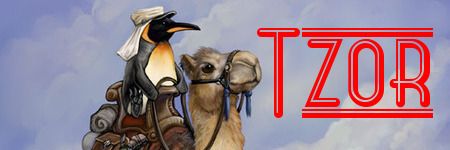


































































Users browsing this forum: No registered users